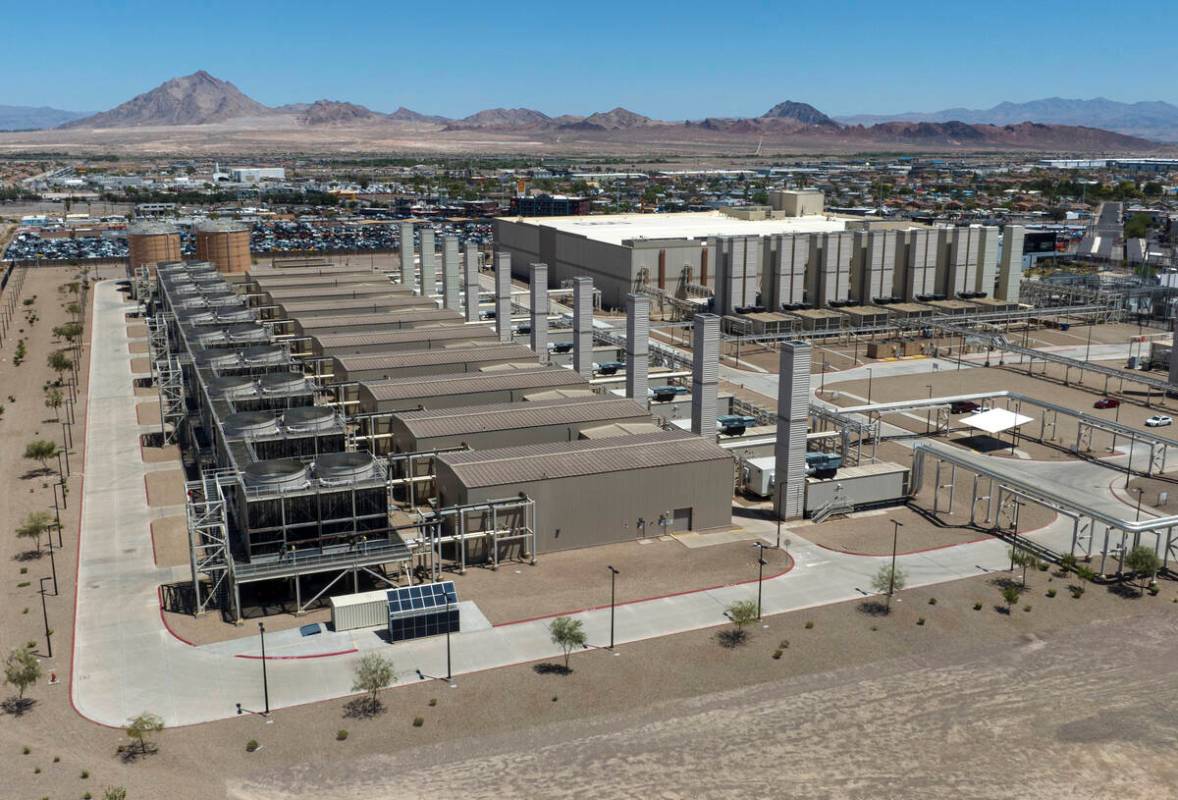NEVADA VIEWS: Nevada can power the great next leap

In the 1990s, the internet boom transformed entire economies, created new industries and reshaped how we live and work. Today, we stand on the brink of another major leap, one driven by data centers, the critical infrastructure of the modern economy.
For Nevada, already home to data centers for giants such as Switch, Google and Apple, this presents a golden opportunity to lead the digital revolution and ensure long-term economic prosperity.
Data centers are more than just buildings filled with servers — they’re the backbone of innovation today: artificial intelligence models that diagnose diseases and take us to outer space with reusable rockets; autonomous vehicles that will navigate our streets more safely; and secure financial transactions that all depend on the vast computational power in these facilities. Beyond their economic impact, data centers also support national security by enabling real-time threat detection and advanced defense systems.
As global demand for computing energy surges, projections estimate a demand of 10 to 20 gigawatts of data center capacity in Nevada today. Nevada’s strategic advantages position it perfectly to meet this demand and benefit economically.
The proof is already evident. In Northern Nevada, the Tahoe Reno Industrial Center has become a beacon of success, driven in part by data centers. Companies such as Tesla and Switch have transformed the center into a hub of digital innovation, attracting secondary businesses that support the tech economy, everything from logistics and services to advanced manufacturing. Meanwhile, Southern Nevada is emerging as a new hot spot, with investments from Switch, Google and others creating jobs and infrastructure. These developments show that smart growth in data centers can diversify Nevada’s economy, create high-wage jobs and boost local communities.
But realizing this vision hinges on one key factor: energy.
Data centers consume considerable amounts of power and require reliable, scalable electricity to operate smoothly. Luckily, Nevada is rich in energy resources, especially renewables. Solar power, combined with battery storage, offers the lowest levelized cost of energy and can be deployed quickly. The state also has vast geothermal potential, with innovative companies such as Fervo Energy scaling up new projects.
According to Nevada Public Utility Commission filings, more than 50 gigawatts of proposed generation projects are in the pipeline across Nevada, more than enough to meet projected demands if developed thoughtfully. Add in further wind potential currently on hold, small modular reactors and new combined cycle natural gas and Nevada has a clear path to becoming an energy leader.
To seize this opportunity, Nevada must adopt an “all of the above” energy approach while prioritizing renewables to maintain its renewable portfolio standard. Solar and battery systems are already proven cost-effective and quick to deploy. Geothermal, small modular reactors and wind can diversify the electricity grid, reducing dependence on fossil fuels. However, grid connectivity remains a challenge. Careful planning and investment in transmission infrastructure is essential to ensure power can serve these load centers.
Nevada isn’t facing a power crisis. It’s already building a resilient, future-ready energy system. But we need to significantly change our thinking to reach new scale.
The risks of inaction are significant. Globally, the energy race is accelerating. In 2024, China added more than 400 gigawatt of new capacity, while the United States managed just 60. This gap threatens to undermine America’s technological leadership. Data centers and the industries they support, such as microchip manufacturing, are critical to maintaining our competitive edge. The world’s leading economies dominate due to abundant power, and history shows that human prosperity is built on access to energy. If Nevada and the United States don’t address this energy shortfall, we risk falling behind in technology and losing the chance to bring critical industries back home.
Nevada’s path forward is clear: adopt a balanced energy strategy that relies on renewables as the foundation, complemented by reliable thermal power to ensure stability. But we must act proactively. Streamlining federal permits, incentivizing private investment through clarity and expanding transmission infrastructure will unlock Nevada’s potential. By doing so, the state can attract more data centers, generate thousands of new jobs and cement its role as a digital economy leader.
Nevada has the abundant natural resources with sunshine and 80 percent federal land. We just need the collective vision and the momentum to lead. By investing in energy and data center infrastructure now, we can build a future where innovation flourishes and communities thrive and diversify.
We can’t miss this moment. We have the chance to power the next great leap. By embracing digital infrastructure and the energy to fuel it, Nevada can secure its place at the forefront of the next economic evolution.
Scott Whittemore is senior vice president of Energy Project Solutions in Las Vegas.